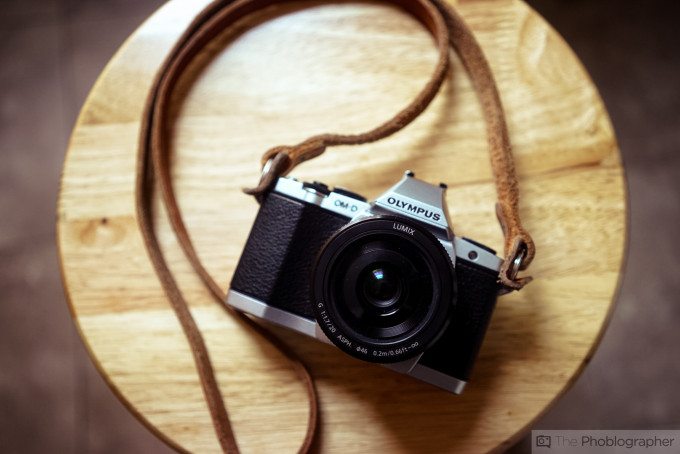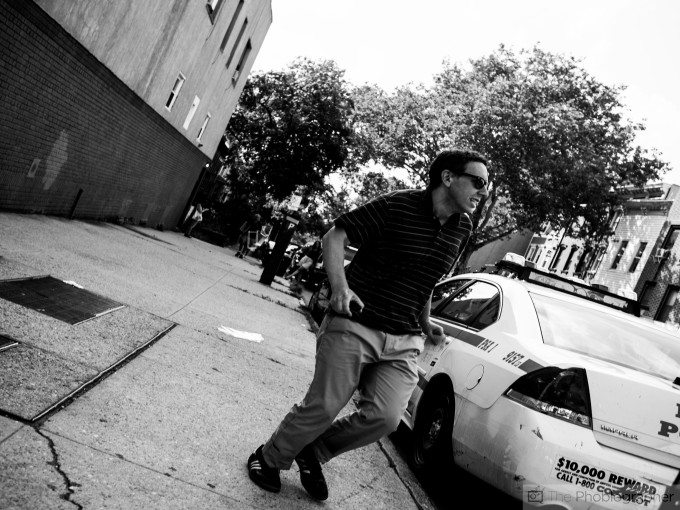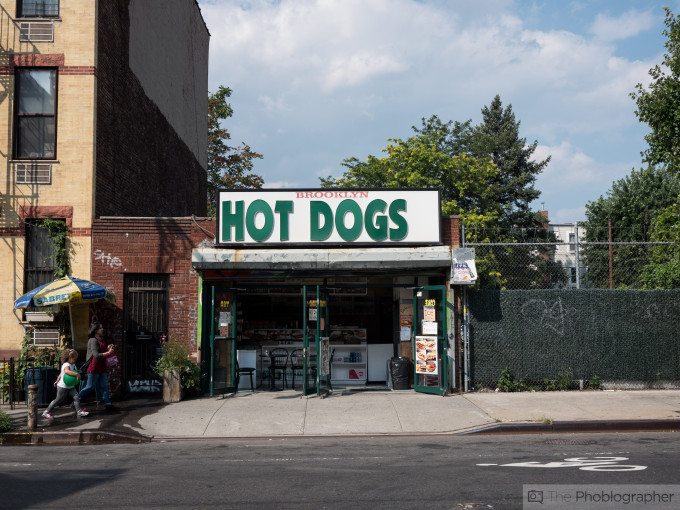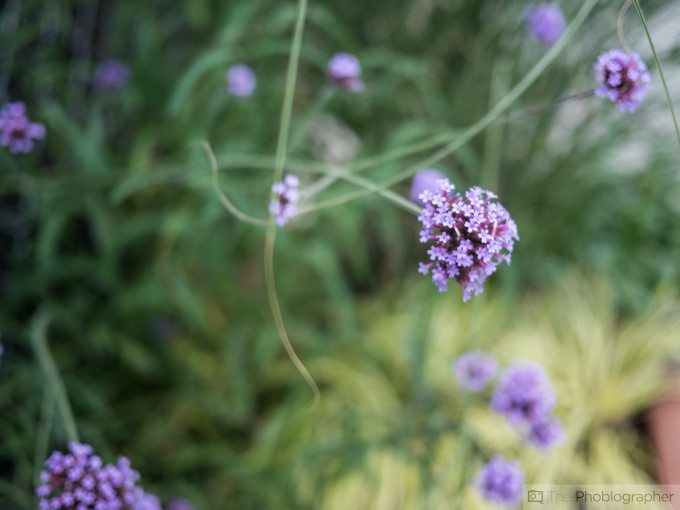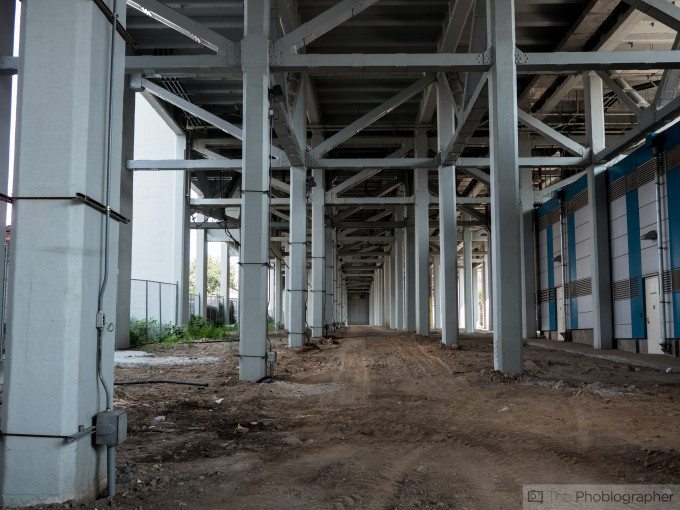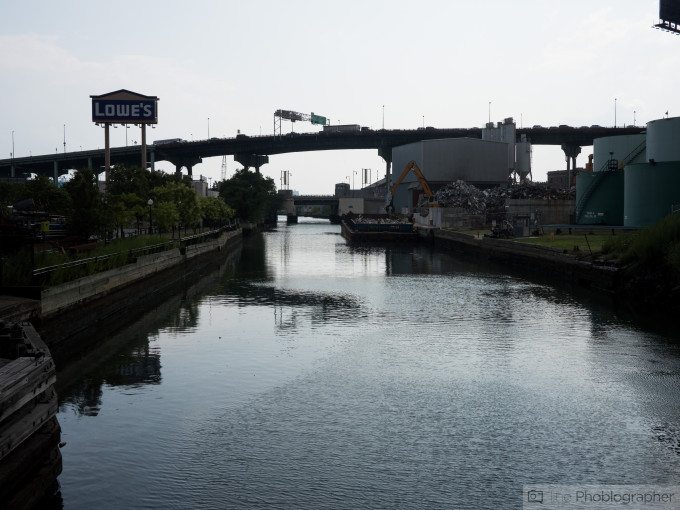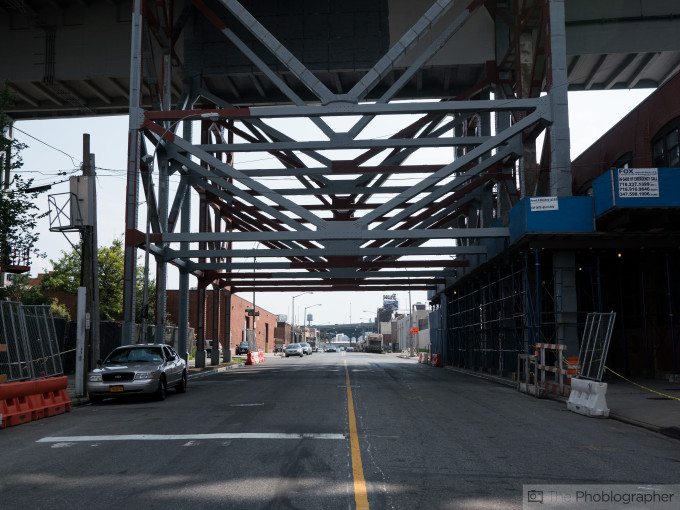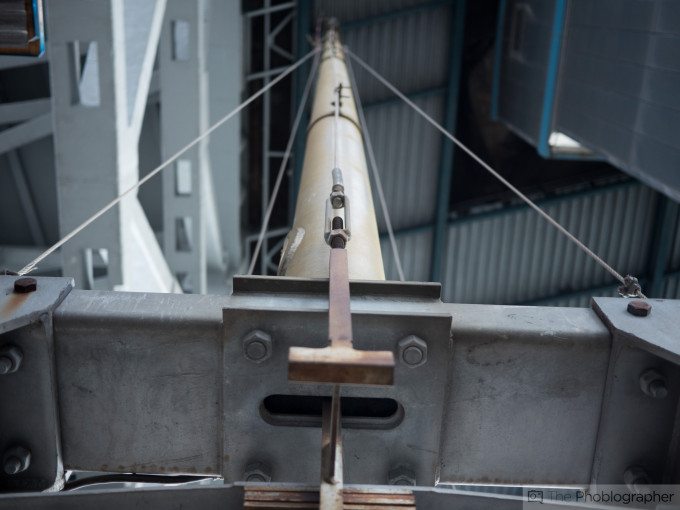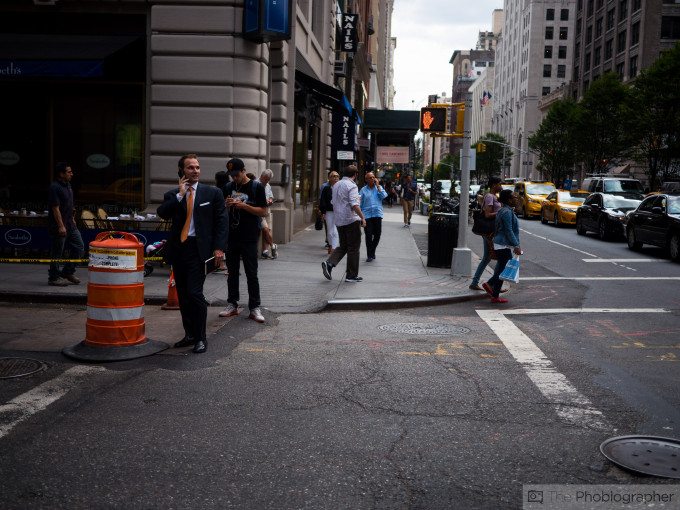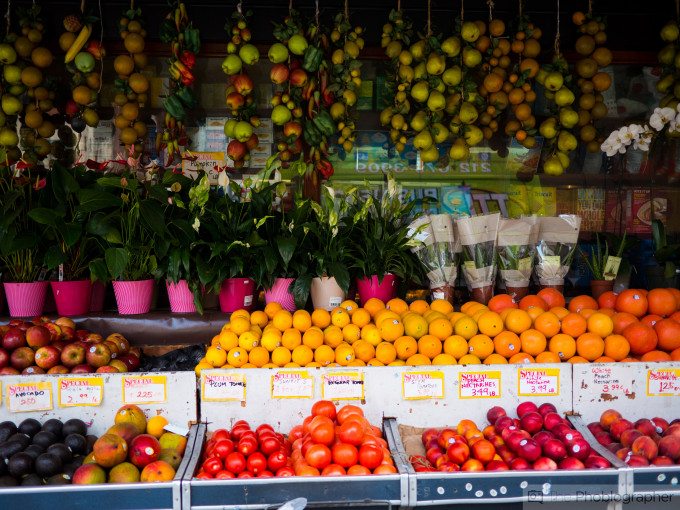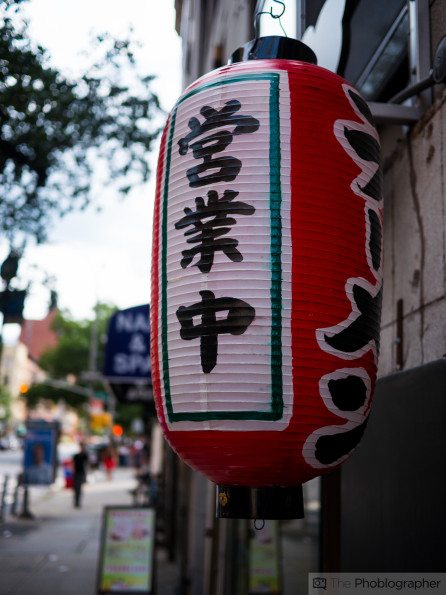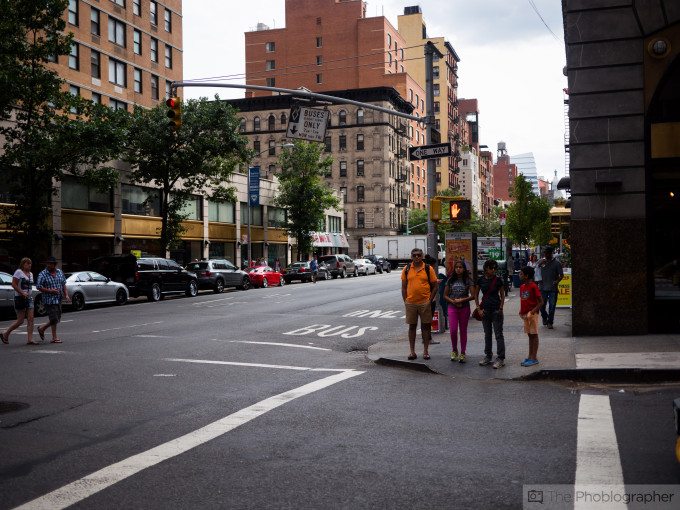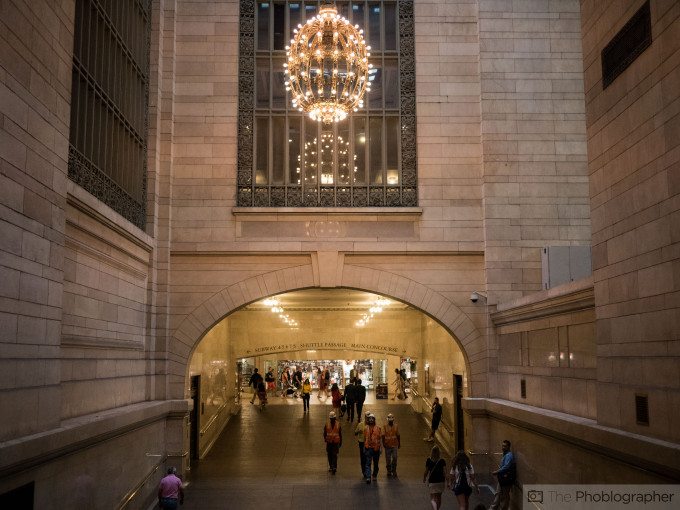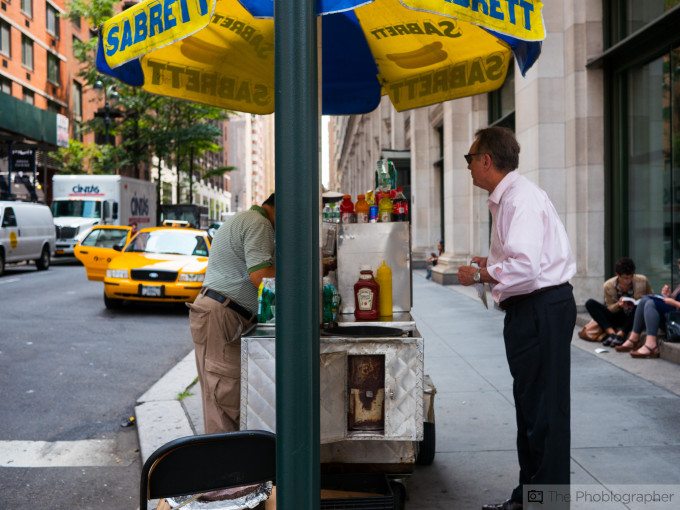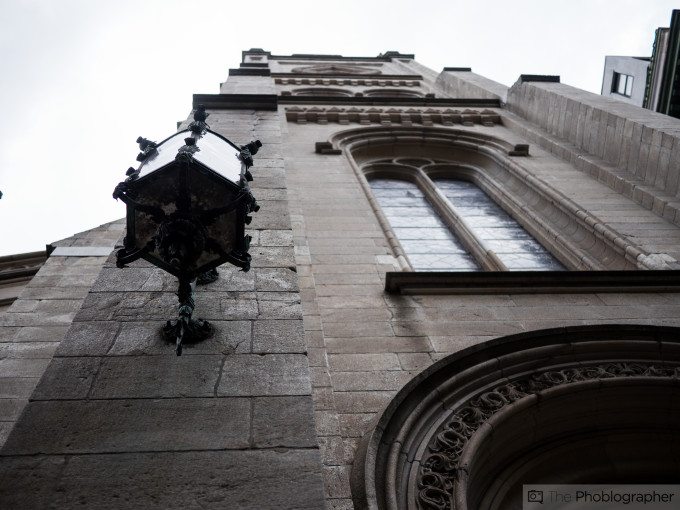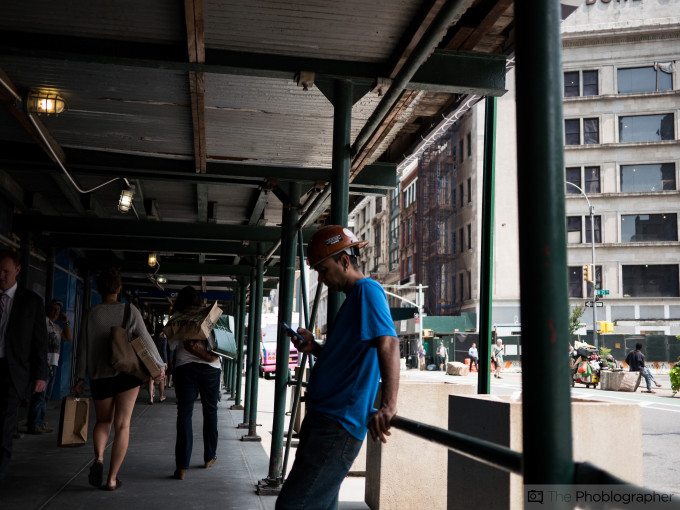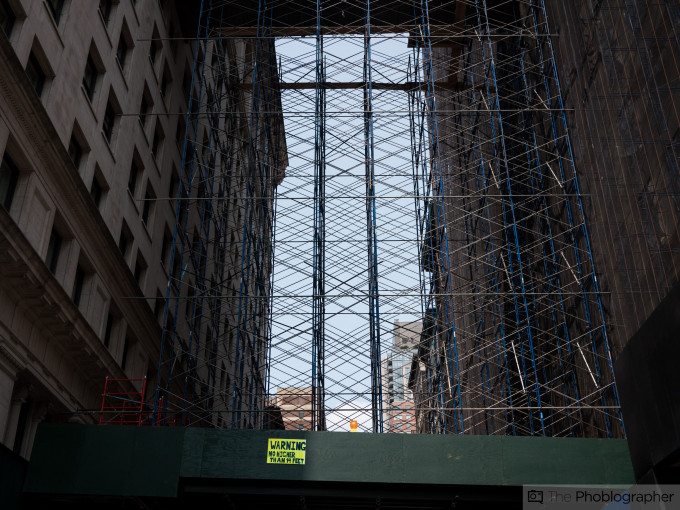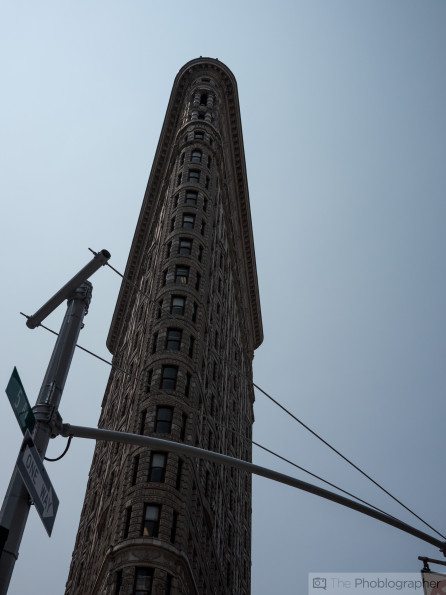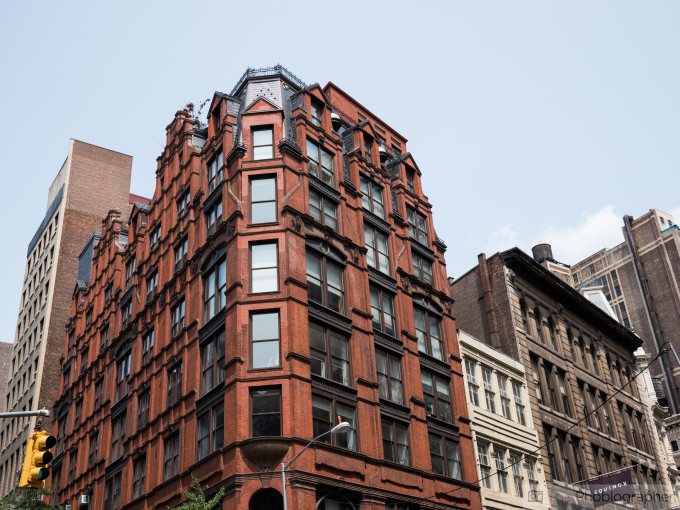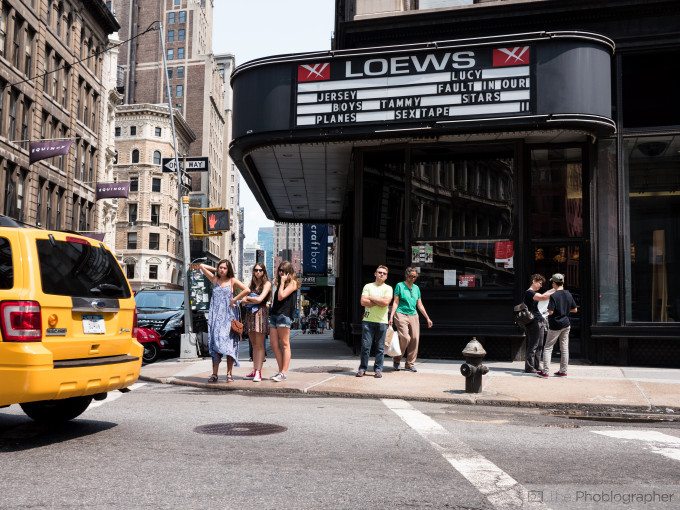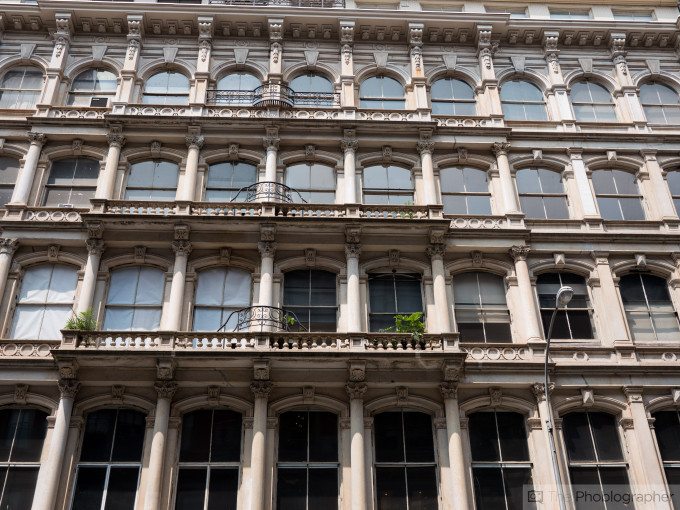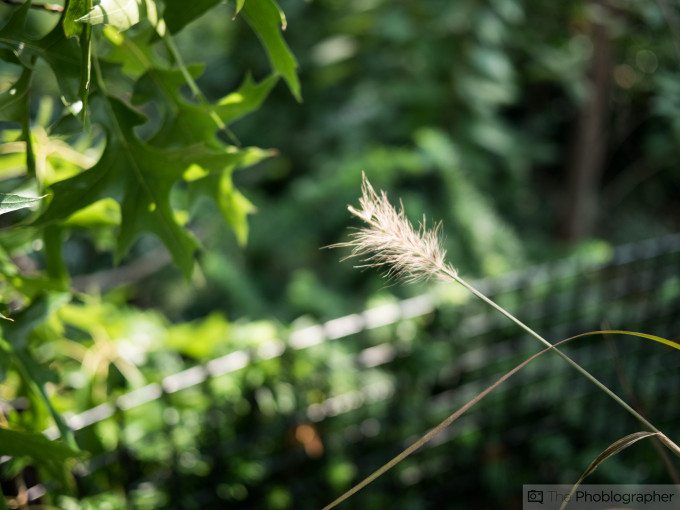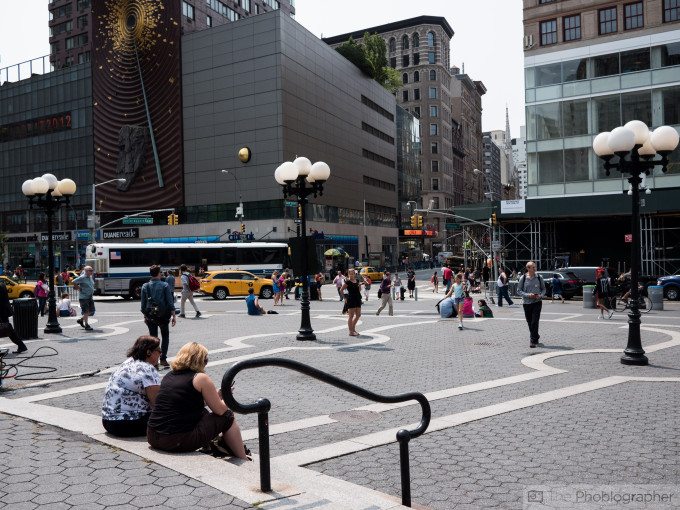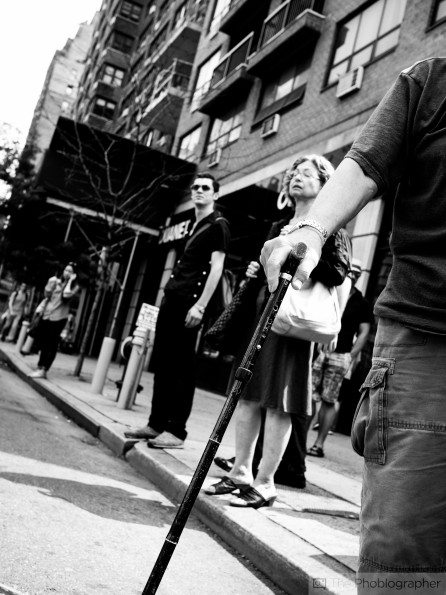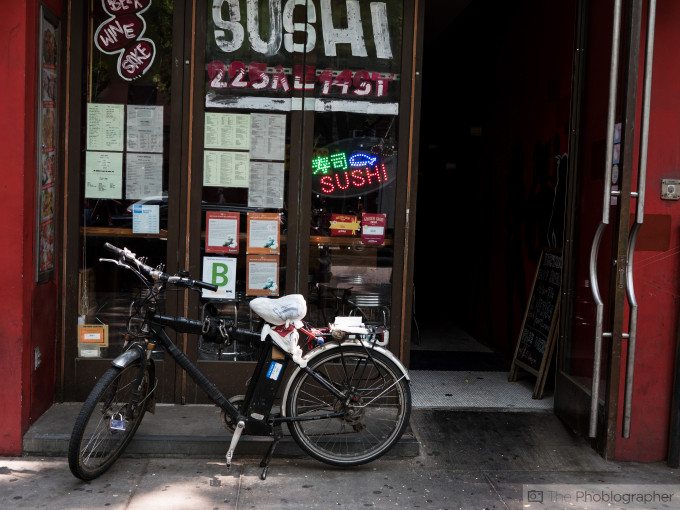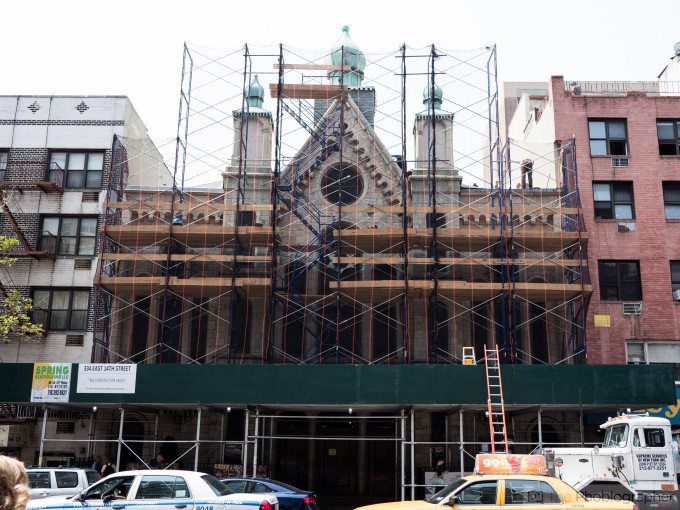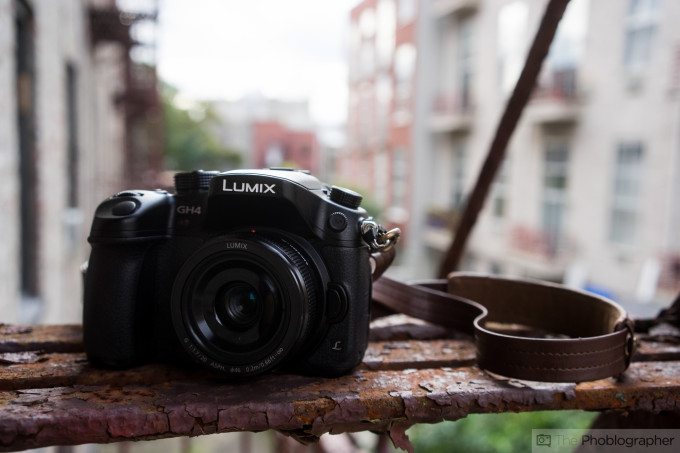Panasonic’s 20mm f1.7 II is a lens that was designed for the street photographer and for the creative embracing smaller cameras. It is an update to one of the first lenses put out for the Micro Four Thirds system; and it has been long overdue in some eyes. Sticking with the pancake design, the lens has upgrades including a metal body, faster focusing motors, and a considerable price hike.
But if you’re a street photographer, then this lens may be the single one you’ll want to own.
Pros and Cons
Pros
– Pretty darn sharp when stopped down, but not so much wide open
– Fast to focus on the GH4, not so much on the OMD E-M5
– Very film-like color rendition
– Distortion is fairly low
– Nice build to it coupled with a low profile design
Cons
– Wish it were sharper wide open
Gear Used
We tested the Panasonic 20mm f1.7 II with the Panasonic GH4 and the Olympus OMD EM5.
Tech Specs
Specs taken from the B&H Photo listing of the product.
| Features | |
|---|---|
| Image Stabilization | No |
| Autofocus | Yes |
| Physical | |
|---|---|
| Filter Thread | Front:46 mm |
| Dimensions (DxL) | Approx. 2.48 x 1.00″ (63 x 25.5 mm) |
| Weight | 3.07 oz (87 g) |
Ergonomics
Taken from the ergonomics section of our first impressions post
Yes, this is a pancake lens. Panasonic and Micro Four Thirds in general have always been great at creating smaller lenses that perform admirably. When you first look at the front of the lens, you’ll see the Lumix branding as well as other details pertinent to what the lens is. On a GH4, it will make the overall package smaller but it’s best suited for smaller Micro Four Thirds cameras. The OMD EM5 and the GX7 may be the best bodies for such a lens.
As with most Micro Four Thirds lenses, it is devoid of controls–which otherwise need to be activated via the camera body’s switches, menus or buttons. There is a fairly decent sized focusing ring around the lens, but otherwise that’s pretty much it.
Build Quality
Over our review period, we’ve come to really appreciate the 20mm f1.7 II lens. It’s built and feels super solid with a metal exterior that works well with both the OMD EM5 and the GH4. When it comes to manually focusing though, you’ll only be working with a small sliver of a focusing ring. Granted, this lens isn’t weather sealed nor does it really need to be.
What we appreciate the most though is its super small size that keeps the camera’s overall package size down tremendously.
Ease of Use
Considering that this is a very typical Micro Four Thirds autofocusing lens, all you really need to do is mount the lens to the camera, point, shoot, and enjoy the images. Considering that there are no switches on the lens, you’ll need to go through camera buttons and menus to switch the focusing type. Otherwise, simply mount it and forget it. It’s a true joy to use.
Autofocus
Panasonic’s 20mm f1.7 II is an autofocusing beast on the GH4 when using the fully automatic focusing modes and not choosing a point beforehand. In fact, we think that it is the fastest focusing lens that we’ve seen for street photography. But when you mount it on the OMD EM5, it starts to lag a bit behind. Once you start selecting specific focusing areas, the focusing speed goes from sloth-like to peregrine falcon.
Image Quality
The overall image quality from the 20mm f1.7 II lens from Panasonic is truthfully pretty damned good. There is a healthy amount of sharpness, contrast, and overall solid color rendition built into this lens. When you couple this with its great build quality and focusing abilities you’ve got yourself quite the winner.
In our tests, we used the lens a lot on the streets because that’s what we feel it would be best for. When the first lens was released, it became a cult classic amongst street photographers. And when it comes to image quality with this lens, we’re sure that most folks won’t really complain about it if they’re shooting RAW or if they want a very film-like look. Out of the camera images tend to look like film due to the lack of contrast and slightly muted colors. But when you bring the RAW files into Adobe Lightroom, this can be easily fixed.
For a 20mm lens, we found the distortion control to be pretty good overall. In fact, unless you’re going to sit there pixel peeping (and it’s really dumb to do so when your clients are doing so) then that’s the only way that you’ll have a problem with this lens. Beyond this, most street photographers don’t sit there speaking about megapixels all day–instead they focus on capturing moments.
And again, all of this can be fixed in Adobe Lightroom.
In comparison to other lenses, we have to admit fully and outright that we’ve seen sharper offerings from Olympus at close focal lengths like the company’s 25mm f1.8 that we reviewed. However, that isn’t a pancake lens and if that’s what you’re looking for then the Panasonic offering really can’t be beat.
Sharpness
According to DxOMark, this lens isn’t as sharp as its predecessor, and we sort of feel the same way. However, when stopped down to f4, you’ll reach the lens’s sweet spot that you’ll really appreciate. In full frame terms, you’ll hit the equivalent of around f8 and that means that you’ll have perfectly sharp images. There is really no need to stop down beyond this.
Bokeh
In order to get bokeh with this lens, we recommend either shooting wide open or getting really close to a subject. At f1.7, you’ll have a full frame equivalent of f3.7, so that may even make you not ever want to stop it down. The bokeh from this lens looks hazy vs being creamy; but we have to admit that it seems pleasing.
Just note that at f1.7 that your images won’t be as sharp as you may have come to expect.
Color Rendition
If you’re a fan of film, then realize that this lens somehow or another renders images with less contrast and not as saturated as we’re used to seeing typically. If you’re a fan of Sigma lenses, then consider this one to be the opposite of that. However, it works for the lens overall and Panasonic’s RAW files are versatile enough where this can be saved.
Color Fringing
In our tests, we couldn’t really identify any color fringing in the images–which is a great thing for JPEG shooters that love to complain about this type of thing. But even for RAW shooters, this means that much less work in the post-production phase.
Extra Image Samples
Here are some extra image samples for you to check out.
Conclusions
Likes
– The fastest focusing lens for street photography
– Pretty good sharpness
– Great build quality
Dislikes
– Pretty negligible to us, but this lens should have been sharper than the first version.
Panasonic’s 20mm f1.7 II is a lens that is a well needed upgrade in some ways, but in other ways it is a step back. The lens could have added more saturation and also could have been sharper. But what you get in return is faster focusing and better build quality. For what it’s worth, we’re positive that there were loads of shooters that beat their lens up after years of continued use. Still though, there isn’t anything necessarily wrong with the lens.
We give the Panasonic 20mm f1.7 II four out of five stars. Want one? Check out B&H Photo where it is listed for $427.99 at the time we have published this review.
Recommended Cameras and Accessories
Panasonic GH4- The GH4 is the company’s flagship camera and it focuses incredibly fast with this lens.
Panasonic GX7– The GX7 is a camera that may go best with the lens due to its smaller size–which works best with the lens’s small size.
Olympus OMD EM-1– Of all the OMD camera models, this one focuses the fastest; though the lens will still perform the best on a Panasonic camera.


